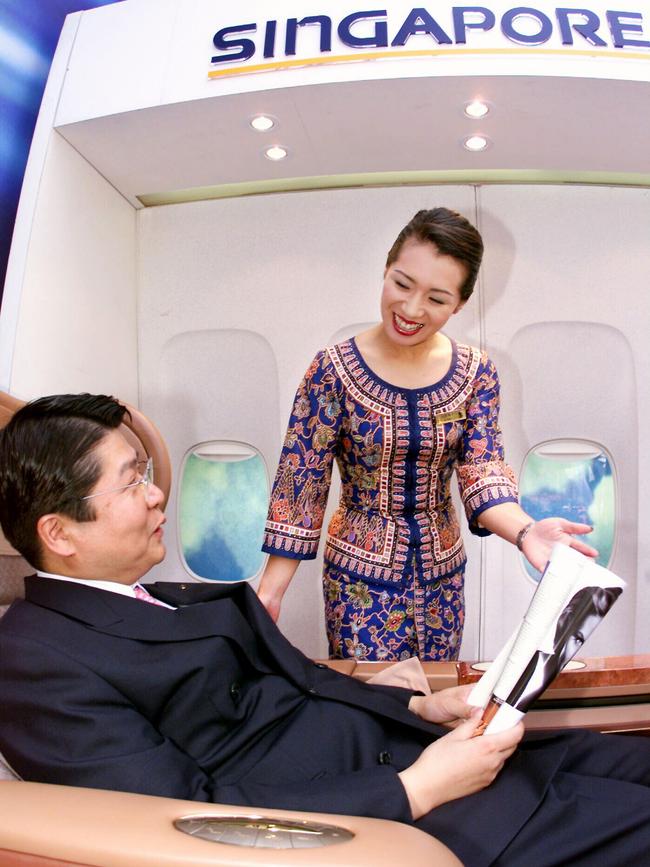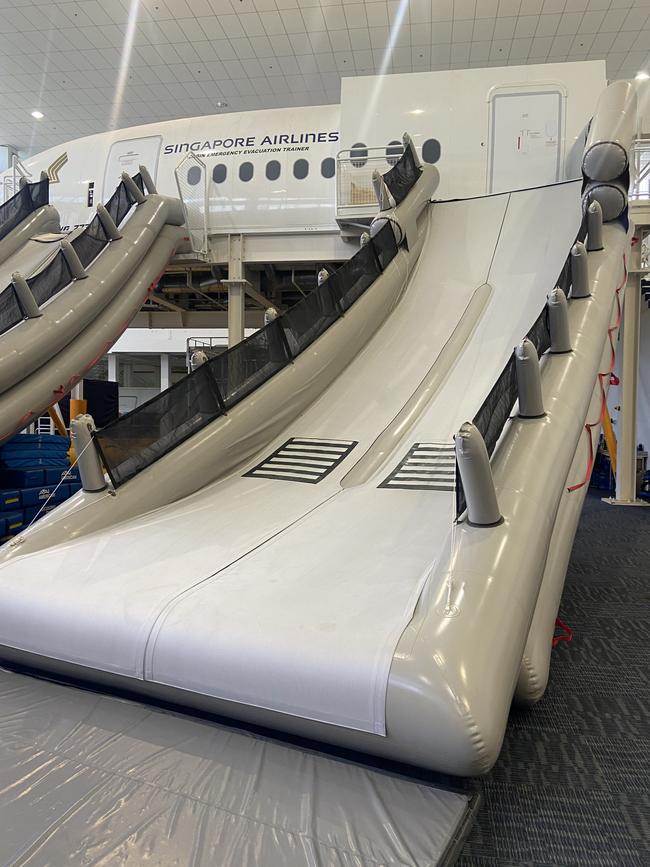What it takes to join one of the world’s best cabin crews
Singapore Airlines’ cabin crew carry an air of mystique with their immaculate grooming and unflappable demeanour – so what does it take to become a ‘Singapore girl’?

Business
Don't miss out on the headlines from Business. Followed categories will be added to My News.
The path to becoming one of the world’s most highly regarded cabin crews is not an easy one. Singapore Airlines has high expectations of its flight attendants over the course of 14 weeks of training and beyond, and then there’s the physical requirement.
“Singapore girls” as they’re known at the airline must maintain a body mass index (BMI) of 22 or less, in order to fit into their unforgiving, custom-made sarong kebaya – the airline’s uniform of 56 years.
Body mass index is weight divided by the square of height in metres, to provide a measure of body fat.
If they fall pregnant they cannot work, but are welcome to return after the baby is born providing they have shed the weight.
Those who were still carrying some extra kilograms were given “more time” to lose the weight, said Foo Juat Fang, assistant manager of cabin crew learning and development.
“We welcome them to start a family because Singapore needs it, so when they come back there’s a job for them — as long as they can fit into the sarong kebaya they’re fine,” Ms Foo said.
For men the maximum BMI is 25 and westerners should not apply.
The airline looks to recruit cabin crew from 10 Asian countries: Singapore, Malaysia, Thailand, Japan, China, Hong Kong, Taiwan, Korea, India and Indonesia.
“Singapore Airlines is a nice mix of the different cultures and we want to see the strength of the different cultures,” Ms Foo said.
“We want what we call the Singapore Airlines’ identity.”

Like most large aviation companies, the airline lost many workers during Covid and was now striving to rebuild to pre-pandemic levels when it was nearing 10,000 cabin crew.
Ms Foo said they had 9000-plus, after an intensive recruitment and training drive in 2023.
“I went through 131 (training) batches with 20 in each batch,” she said.
“The program is designed to get people through the training. If somebody doesn’t make it, we’ll give them additional time by joining another batch, and give them the opportunity to work on whatever it is they’re having difficulty with.”
Singapore Airlines’ campus-like training compound features numerous “mock ups” of aircraft interiors in all classes of travel so cabin crew hopefuls can become familiar with the space restrictions and seat configuration.
There is also grooming, deportment and service training, with Gen Z trainees creating a “new challenge” for Ms Foo.
“I notice that when we train them, they’re very comfortable talking and having people watch them, so I obviously tell them that service is not about them, it’s about listening and watching others,” she said.
“It’s a service, so I think that’s the hard part. We tell our people to expect the unexpected. Don’t be frazzled.”
Safety accounted for a significant portion of the training, with crews put through a wide range of scenarios, from on-board fires and smoke in the cabin, to decompression and water ditching.
Two emergency slides were a permanent fixture of the safety training area, at a height of a Boeing 777 and an A380.
Manager of facilities and training Celine Kwah explained the slides were specifically made for training with those on aircraft designed for “one time use only”.
The trainees also learnt to open aircraft doors in various situations, inflate life rafts and access the rafts from the ditched aircraft.

Although the ability to swim was not a prerequisite for cabin crew, Ms Kwah said they did have to demonstrate they could move through the water in a life jacket.
A large wave pool assisted in the training, with lifeguards at the ready.
Female cabin crew were required to tie their kebaya skirt up to allow free leg movement in the water while men practised the water ditchings in a pair of overalls.
After completing the 14 weeks including three training flights, cabin crew were assigned to particular aircraft type in economy wearing a blue kebaya.
As they increased their competency, there was the opportunity to move up to premium economy, then business and ultimately first class – where three cabin crew waited on just six passengers in Singapore Airlines’ luxurious suites.
“Anyone working in first class has been with us as cabin crew for at least six to seven years,” Ms Foo said.
The colour of the kebaya was also a sign of seniority with purple at the top, red second and green third with blue the most junior.
Ms Foo said there was no shortage of applicants to become a Singapore Airlines’ flight attendant because of the opportunities to see the world.
“From the Singaporeans’ perspective, it’s a small country so everything out there is more fascinating,” she said, laughing.
The writer was a guest of Singapore Airlines in Singapore.
More Coverage
Originally published as What it takes to join one of the world’s best cabin crews





